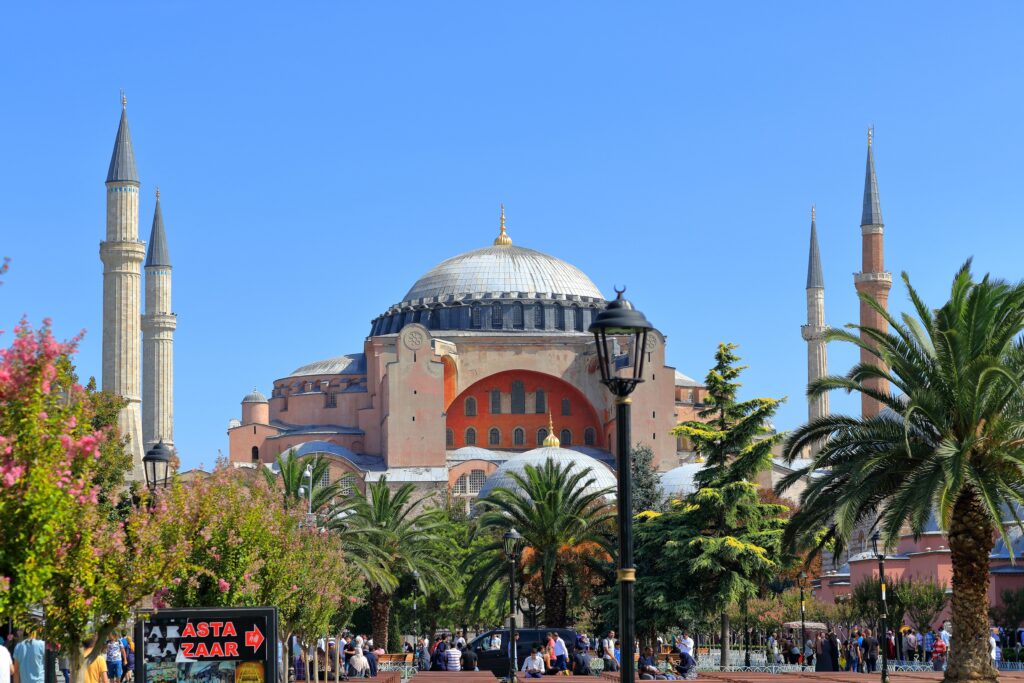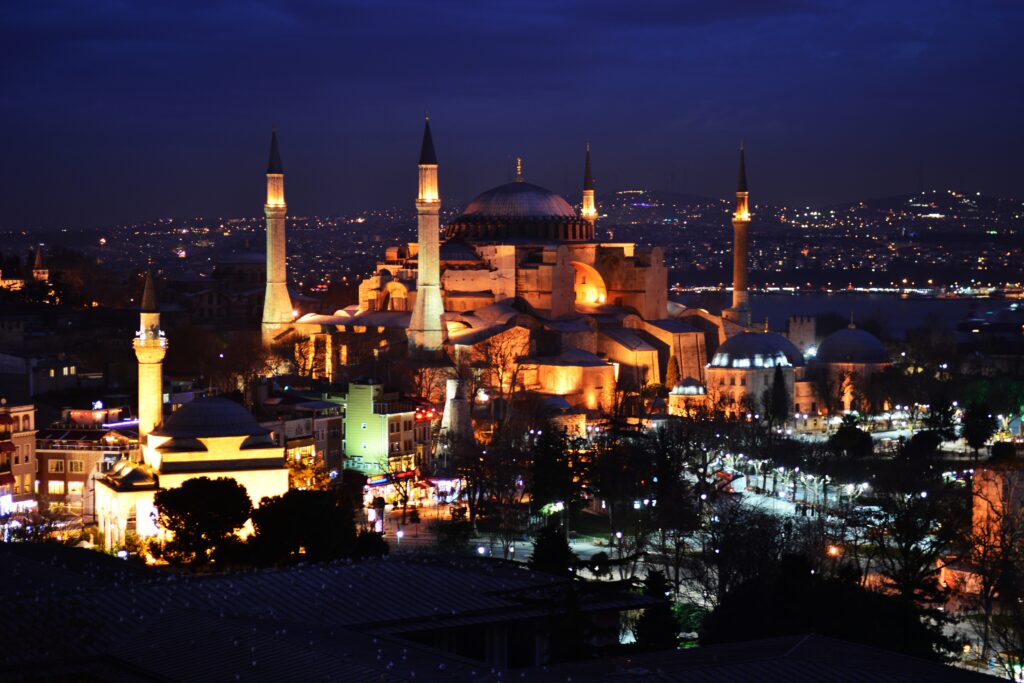Introduction:
Istanbul, the vibrant metropolis that spans two continents, has a rich and diverse history that reflects the ebb and flow of civilizations. Formerly known as Byzantium and later Constantinople, this city has been a witness to the rise and fall of empires, the convergence of cultures, and the evolution of societies. In this exploration of Istanbul’s history, we will trace its journey from ancient times to the modern era, uncovering the layers of history that have shaped this unique and fascinating city.

I. Ancient Foundations:
A. Byzantium (c. 660 BCE): The origins of Istanbul can be traced back to the ancient Greek city of Byzantium, founded around 660 BCE by Megaran colonists. Positioned strategically along the trade routes between the Black Sea and the Aegean Sea, Byzantium quickly became a thriving center of commerce.
B. Roman Period (196 CE): In 196 CE, Byzantium was officially incorporated into the Roman Empire by Emperor Septimius Severus. Its importance as a strategic and economic hub continued to grow, setting the stage for its future significance.
II. Constantinople: The Byzantine Era (330-1453):
A. Foundation of Constantinople (330 CE): Emperor Constantine the Great, recognizing the strategic importance of Byzantium, refounded the city as Constantinople in 330 CE. This marked the beginning of a new era as the capital of the Eastern Roman Empire.
B. Byzantine Golden Age: Under the rule of Emperor Justinian I (527-565 CE), Constantinople experienced a period of cultural and architectural flourishing. The construction of the Hagia Sophia, an architectural marvel, highlighted this golden age.
C. Iconoclasm and Cultural Shifts: The Byzantine Empire underwent a series of religious and cultural shifts, including the Iconoclastic Controversy in the 8th and 9th centuries, which saw the destruction of religious icons.
D. Fall to the Ottoman Empire (1453): The Ottoman Turks, under the command of Mehmed II, successfully captured Constantinople in 1453, marking the end of the Byzantine Empire. The Hagia Sophia was converted into a mosque, symbolizing the transition from Byzantine to Ottoman rule.

III. The Ottoman Empire (1453-1922):
A. Ottoman Expansion: Istanbul became the capital of the Ottoman Empire, and under the rule of Suleiman the Magnificent, it flourished as a political, cultural, and economic center. The city’s skyline transformed with the construction of mosques, palaces, and markets.
B. Cultural Diversity: Istanbul’s diverse population reflected the multicultural nature of the Ottoman Empire. The city served as a melting pot of different ethnicities, religions, and traditions.
C. Decline and Modernization: In the 19th century, the Ottoman Empire faced challenges, leading to efforts at modernization known as the Tanzimat reforms. These changes set the stage for the empire’s eventual dissolution after World War I.
IV. Transition to Modern Turkey (1923 Onward):
A. Formation of the Republic of Turkey: After the end of World War I and the Turkish War of Independence, Mustafa Kemal Atatürk founded the Republic of Turkey in 1923, with Ankara as its capital. Istanbul remained a significant cultural and economic center.
B. Population Exchange: The 1923 Treaty of Lausanne resulted in a population exchange between Greece and Turkey, leading to a significant shift in Istanbul’s demographics.
C. Modern Urbanization: Istanbul experienced rapid urbanization in the 20th century, with the construction of bridges, highways, and modern infrastructure. The city continued to evolve as Turkey embraced its role as a secular republic.
V. Contemporary Istanbul:
A. Cultural Hub: Today, Istanbul stands as a vibrant metropolis that bridges Europe and Asia. The city’s rich history is visible in its architecture, from the ancient walls of Constantinople to the Ottoman-era mosques and palaces.
B. Economic Center: Istanbul plays a crucial role in Turkey’s economy, serving as a major financial and cultural hub. The Grand Bazaar and modern shopping districts exemplify the city’s economic vitality.
C. Cultural Landmarks: Istanbul boasts a wealth of cultural landmarks, including the Hagia Sophia, the Blue Mosque, and Topkapi Palace. These sites attract millions of tourists each year, contributing to the city’s global appeal.
D. Challenges and Opportunities: While Istanbul thrives in many aspects, it also faces challenges such as urbanization issues, traffic congestion, and the preservation of its historical sites. Balancing modernity with the preservation of cultural heritage remains a continuous effort.
VI. Conclusion:
From its humble beginnings as Byzantium to its status as Constantinople, and finally, its evolution into modern-day Istanbul, this city has stood as a testament to the resilience and adaptability of human civilization. Istanbul’s history is a mosaic of cultures, religions, and empires, each leaving its indelible mark on the cityscape. As Istanbul continues to embrace its role as a global city, its journey through the ages remains a captivating narrative of continuity and change, shaping its destiny at the crossroads of two continents.
